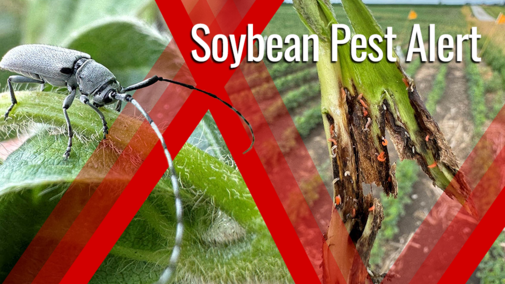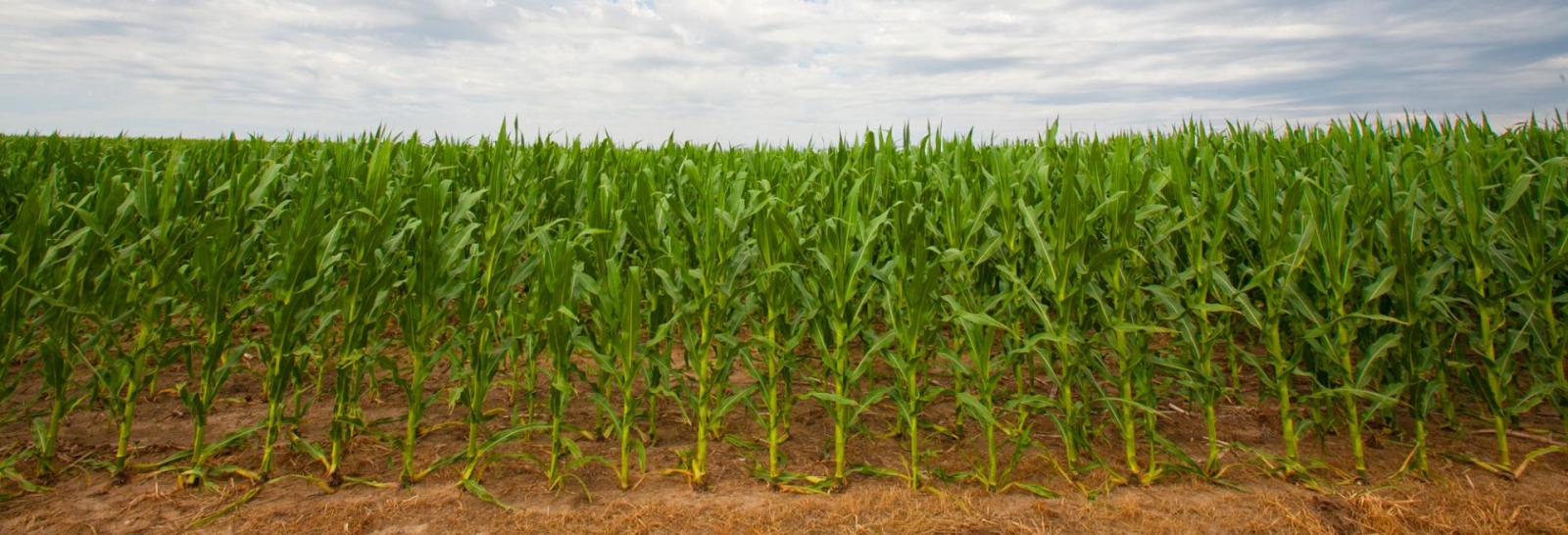Take Home Message
Soybean gall midge continues to cause major yield losses along field edges, with losses up to 34 bu/acre observed in 2024. Early-season activity and plant wilting have already been reported in several counties this year.
Dectes stem borer weakens soybean stems, especially during late-season storms. While feeding alone doesn’t always reduce yield, it can increase lodging and worsen losses when combined with other pests like gall midge.
The risk of soybean white mold is increasing in fields across the state with a history of the disease. Management for this disease should be targeted around the R2 growth stage.
Fields with multiple pests face the greatest risk. Research studies are underway to look at the combined pressure from gall midge, Dectes, and plant diseases, and their impact on yield, and determine the need for a multi-disciplinary pest management program.
Key Pests and Observations
If you’re a soybean farmer in Nebraska, you’ve likely dealt with plenty of insect pests and plant diseases over the years. In 2018, a new pest was identified in eastern Nebraska: the soybean gall midge (Figure 1). When infestations are high, this pest can cause almost total yield loss in the first 100 feet along a field edge. The damage comes from tiny larvae that feed at the base of the soybean stem. Their feeding blocks the flow of water and nutrients, which causes the plant to wilt and die.
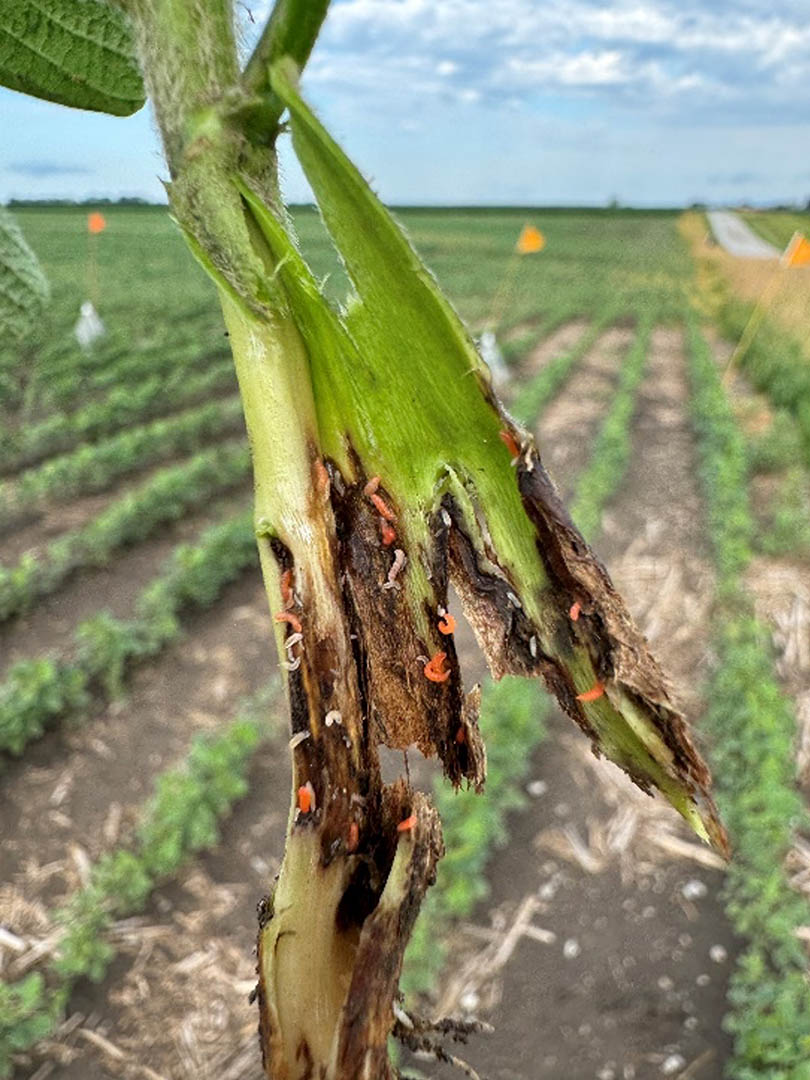
While scouting fields for soybean gall midge, you might also spot a small gray beetle with long antennae called the Dectes stem borer (Fig. 2). This insect is native to North America and formerly fed mostly on plants like ragweed, cocklebur and sunflower. But over the past few decades, it has shifted to soybean, which has raised concerns about possible yield losses.
In spring, adult Dectes beetles come out and the females lay eggs by chewing a small groove into the petiole — the stalk that attaches the leaf to the stem — of the soybean plant. After hatching, the larvae feed inside the petiole before tunneling into the main stem, where they stay most of the summer. These larvae feed on the plant’s pith — the soft center — turning the stem into something that looks like a hollow straw.
Cutting open an infested stem can be shocking, but studies from the southern U.S. show that this type of feeding doesn’t always reduce yield. However, a bigger concern comes later in the season when the larvae prepare for winter. Before going dormant, they chew a notch at the base of the plant, weakening the stem. Referred to as girdling, this damage can cause plants to break or fall over during strong winds or storms, which can lead to serious harvest losses.
In the fall of 2023, we visited soybean fields where farmers thought Dectes stem borer might be killing their plants. However, Dectes doesn’t usually kill plants by itself because of the way it feeds. Instead, what they found were several types of plant diseases and soybean gall midge. Since these pests and diseases often show up in the same fields, it’s important to figure out how they might interact. Having more than one problem at the same time could lead to even greater yield losses for farmers.
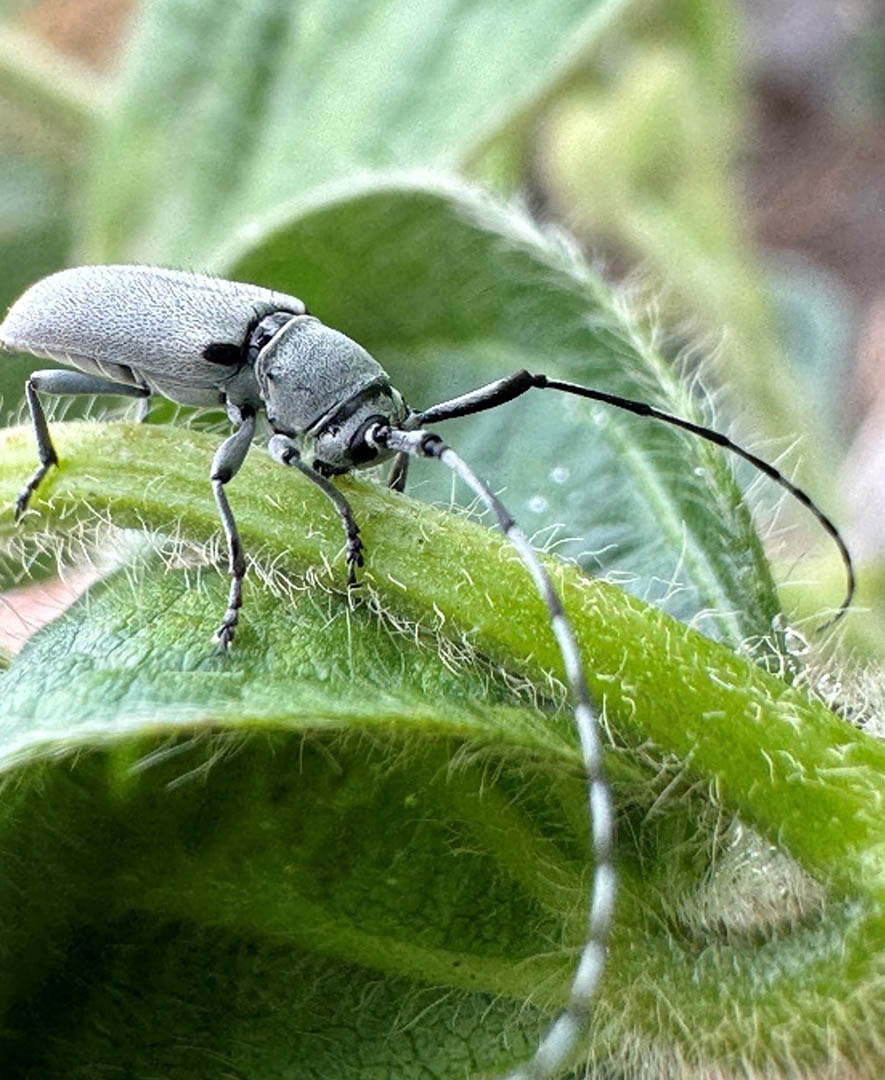
Project Goals
Last year, the Nebraska Soybean Board funded a project to look at the yield impacts and interactions of soybean gall midge, Dectes stem borer and plant diseases at several locations in eastern and central Nebraska. The project is led by Thales Rodrigues da Silva, a Department of Entomology master of science student, who is co-advised by Drs. McMechan and Mangel.
To evaluate these interactions, we have a series of unconventional treatments — including hilling for soybean gall midge, fipronil seed treatment for Dectes stem borer, and several fungicide applications — that limit a key pest from the system, so we can study the impact of different combinations of pests. As part of the project, we will provide a series of updates on what we see at each of the research sites.
Field Observations
In mid- to late June, soybean fields at nine different sites were sampled for soybean gall midge, petioles were checked for Dectes stem borer, and plots were visually evaluated for plant diseases.
Insect Observations:
- Soybean gall midge first emerged from overwintering sites on May 30.
- Soybean gall midge larvae were found at all the eastern sites except Cass County (Figure 3).
- Saline County larval counts are exceptionally high for this early in the season.
- The number of larvae has increased since the larval collection, and we are seeing wilting and dead plants (red circles) from soybean gall midge in Saunders, Cass, Otoe and Saline counties (Figure 3).
- Dectes adults have been observed at some sites, with the first adult observed on June 6.
- Eggs of Dectes have been found at some sites, which is normal relative to previous years.
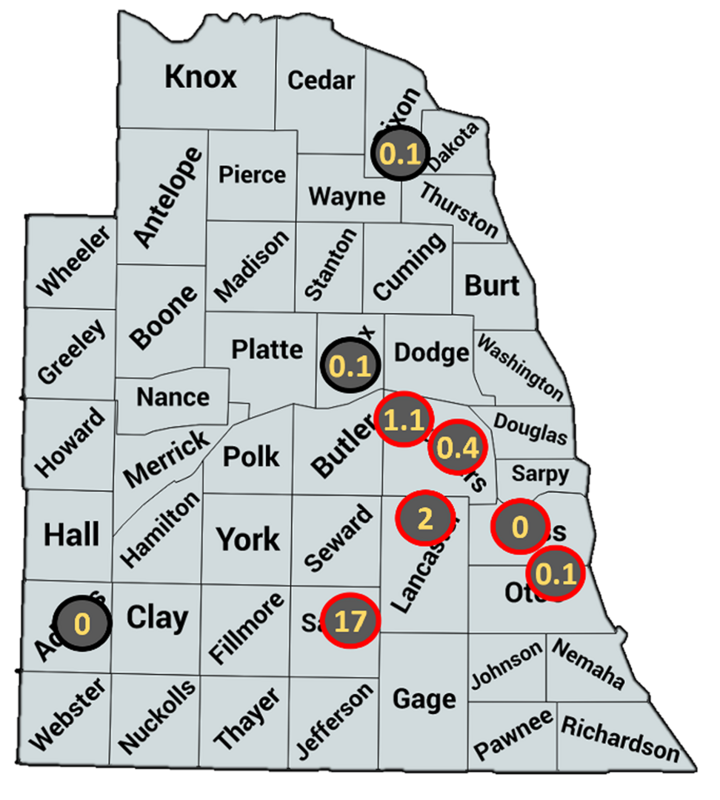
As expected, no soybean gall midge larvae were found in Adams County, although a few larvae were found in the county last year as part of a Nebraska Soybean Board-funded field survey. To avoid spreading this pest to western sites, we visit the sites in Adams County before visiting any soybean fields in the eastern part of the state where soybean gall midge is present.
We will be evaluating the interactions of those two pests during our next set of collections in mid- to late July.
Disease Observations:
- Plant diseases have not been too abundant, with some low levels of suspected Phytophthora at a few sites.
- Some plants in Otoe County exhibited symptoms consistent with Phytophthora, but the incidence was low.
2024 Results
Last year’s study showed significant yield impacts from soybean gall midge (Figure 4) at five of the eight sites, with losses ranging from 12-34 bu/acre.
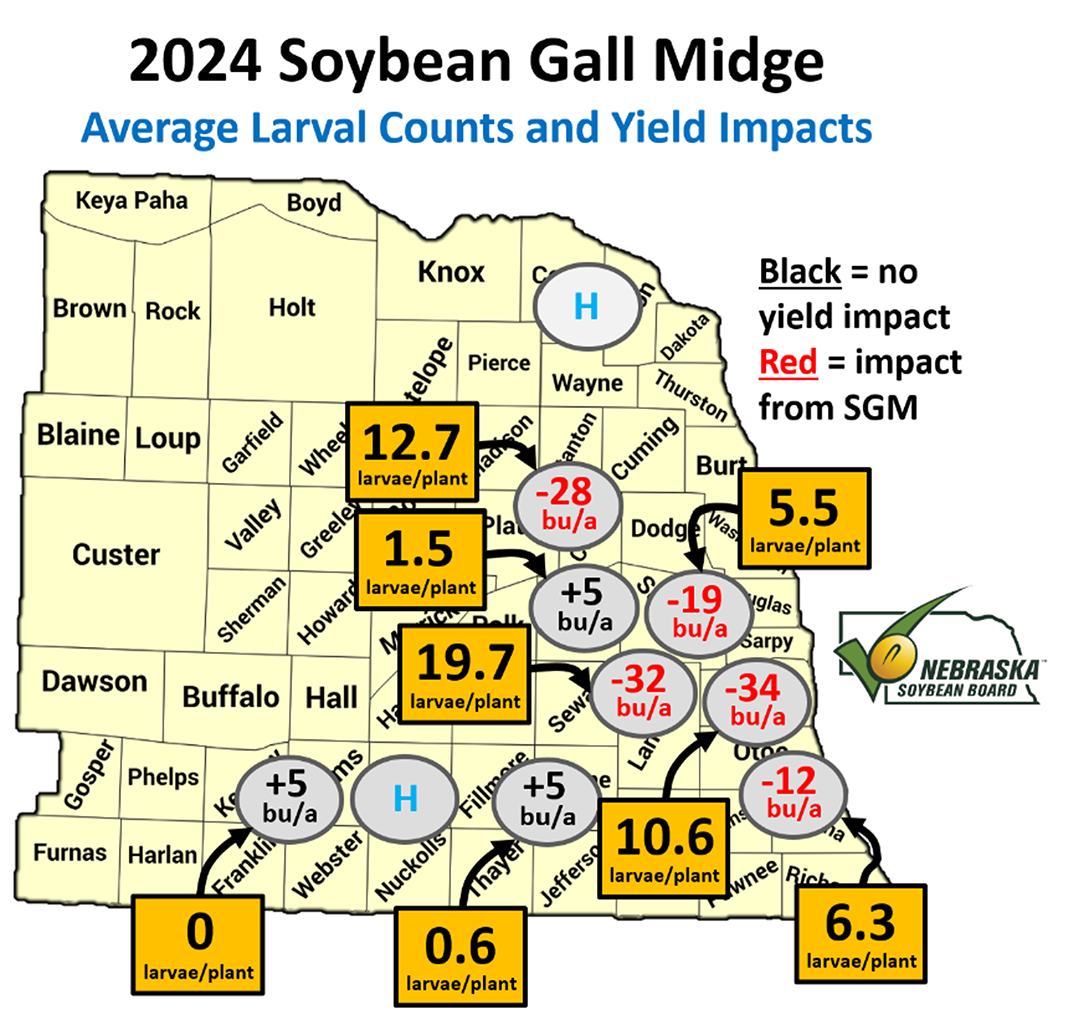
It’s important to note that this data is being taken within the first 40 feet of the field edge. Losses typically decline as you move away from the edge of the field.
Dectes stem borer (Figure 5) was reduced 63% to 94% when fipronil was applied as a seed treatment. It’s important to note that fipronil is not registered for use in soybean and its use is only to measure the impact of the pest.
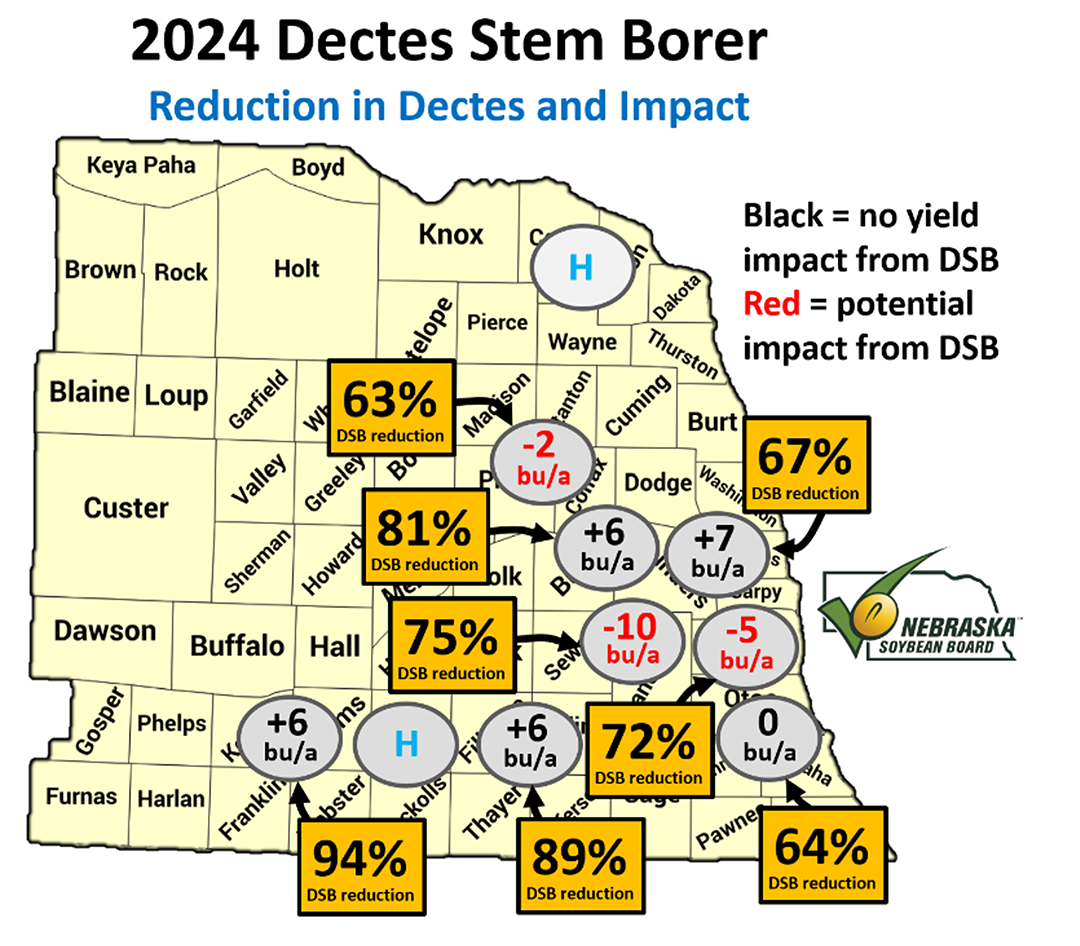
Yield impacts from Dectes were found at three sites, ranging from 2-10 bu/acre. All three sites sustained significant pressure from soybean gall midge. No significant disease pressure was observed at any of the sites last year due to drier than normal field conditions.
You can expect our next update in late July, once we have finished processing our next round of collections. If you have any questions about the project, please don't hesitate to contact us by phone or email.
